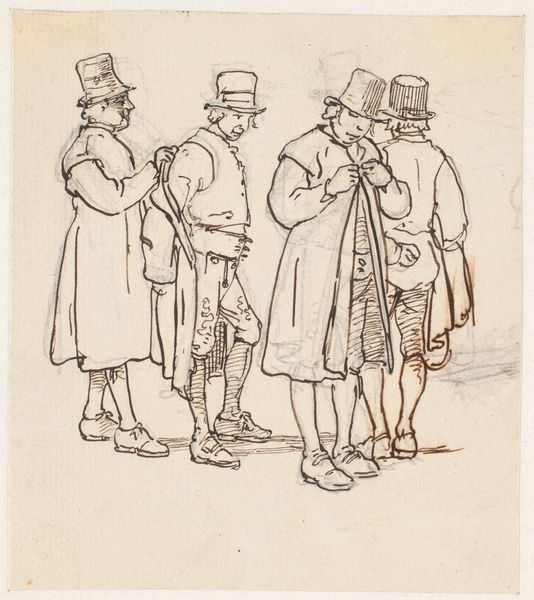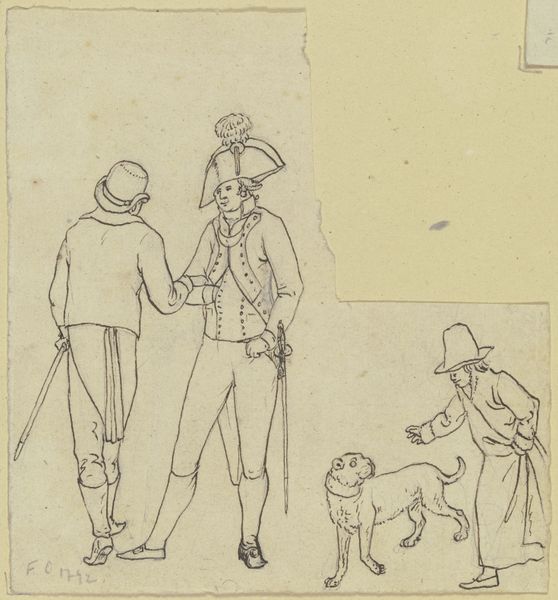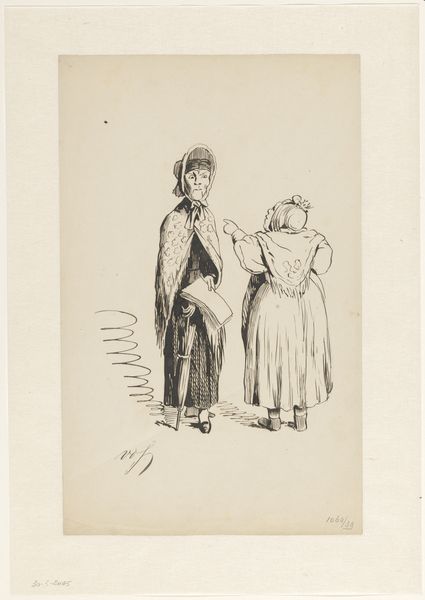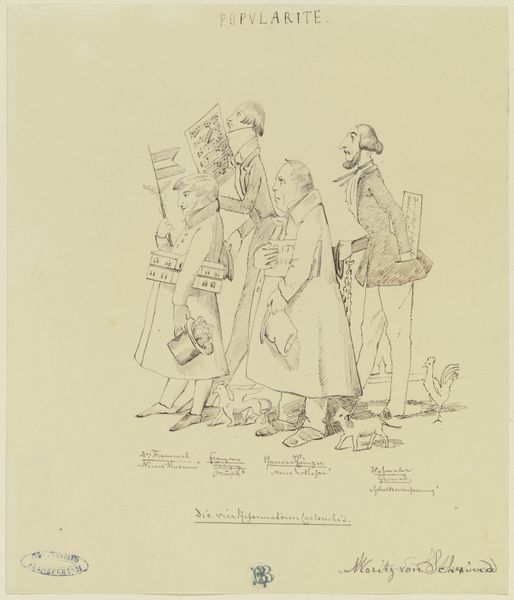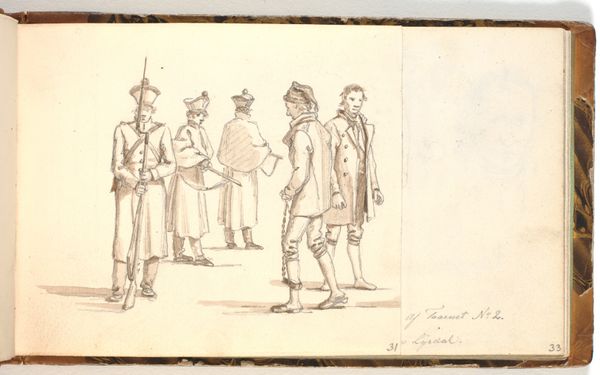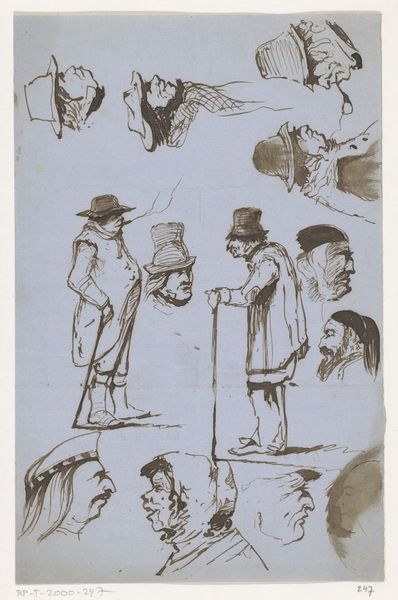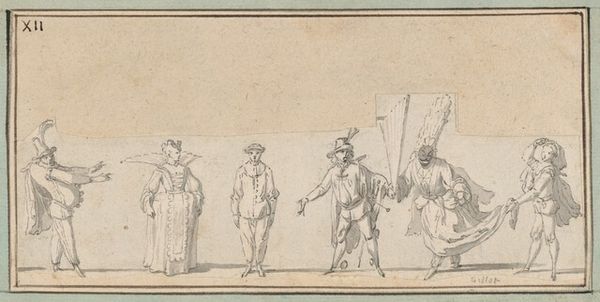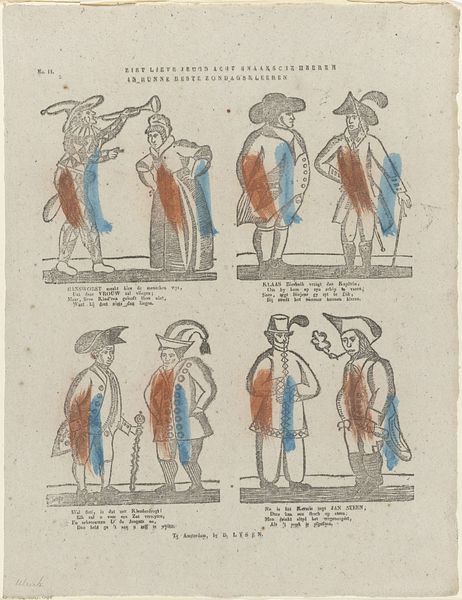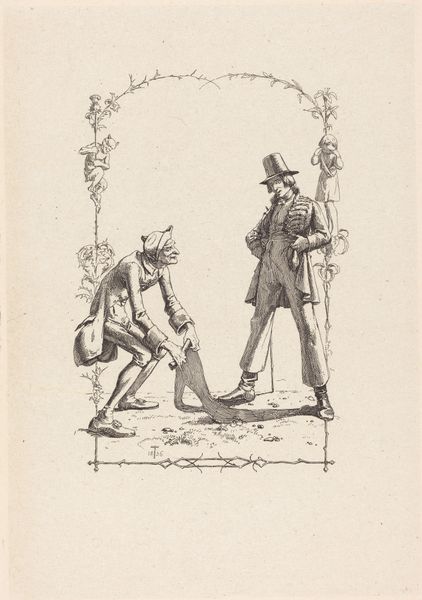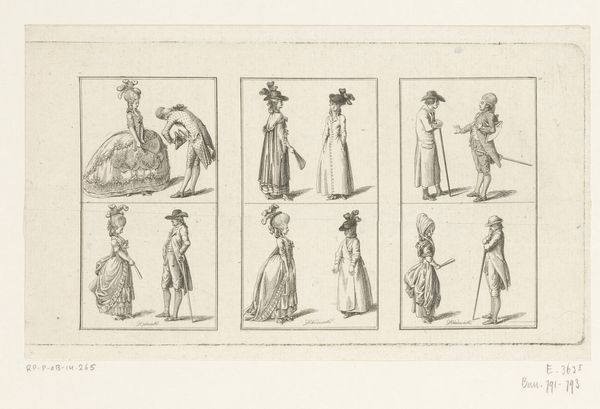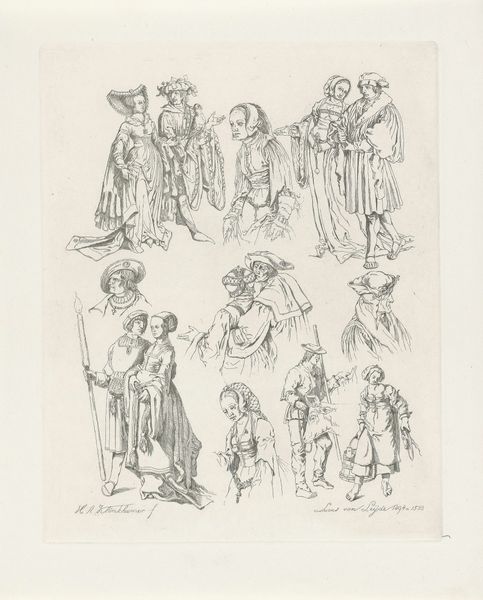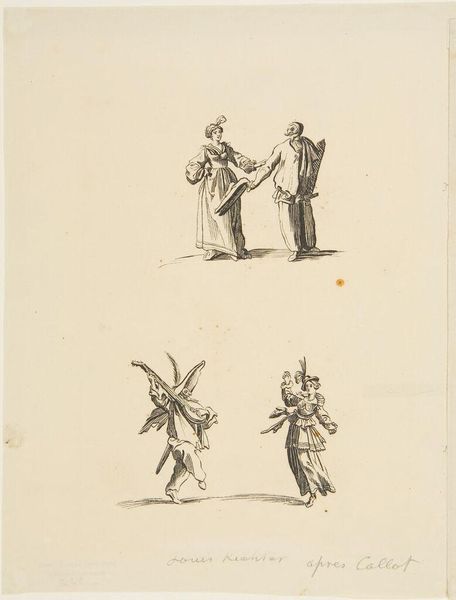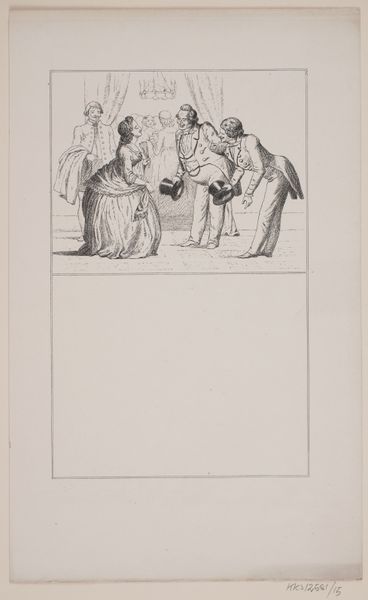
Menukaart van het diner bij de Internationale Tentoonstelling op Hygienisch Gebied in Amsterdam before 1921
0:00
0:00
drawing, ink, pen
#
drawing
#
comic strip sketch
#
imaginative character sketch
#
narrative-art
#
sketch book
#
cartoon sketch
#
figuration
#
personal sketchbook
#
ink
#
character sketch
#
pen-ink sketch
#
comic
#
sketchbook drawing
#
pen
#
history-painting
#
storyboard and sketchbook work
#
sketchbook art
Dimensions: height 219 mm, width 164 mm, width 327 mm
Copyright: Rijks Museum: Open Domain
Editor: This drawing, entitled "Menukaart van het diner bij de Internationale Tentoonstelling op Hygienisch Gebied in Amsterdam," dates from before 1921, and the artist is anonymous. It's done in pen and ink and depicts two rows of rather interesting figures. The mood is…satirical, almost like a political cartoon. How do you interpret this work? Curator: This piece offers a fascinating glimpse into the intersection of hygiene, public perception, and societal hierarchies in the early 20th century. Considering it was made for an International Hygiene Exhibition dinner, it prompts us to consider who exactly was invited, and who was considered worthy of being fed. How are different social classes and professions represented here, and what commentary might the artist be making about the relationship between them and hygiene standards? Editor: I notice different "types" of people – maybe representing different jobs. One carries what looks like a staff with a snake – perhaps medicine? Then a clergy member maybe, and some very official looking gents. The bottom row is more… "everyday?" Curator: Exactly. Consider the context of the time. This exhibition occurred during a period of significant social reform movements, many informed by public health concerns. We might think about how this menu reflects prevailing social Darwinist views. Are these figures merely caricatures, or are they commenting on systems of power, suggesting, perhaps, who had access to hygiene and health and who did not? Editor: So, it’s less about just clean versus dirty, and more about who *gets* to be clean? That gives the drawing a different kind of weight. It highlights social injustice. Curator: Precisely! It also leads to asking relevant questions about inequality, such as the cost of hygiene and health access then, and its correlation with social and financial access now. How far have we come? Editor: I hadn't thought of it that way at all. I appreciate your perspective. I think it adds a new level of engagement and consideration to what I thought was simply a historical curiosity! Curator: Absolutely. It’s in making those connections that art becomes truly alive and relevant to the issues facing our world.
Comments
No comments
Be the first to comment and join the conversation on the ultimate creative platform.
